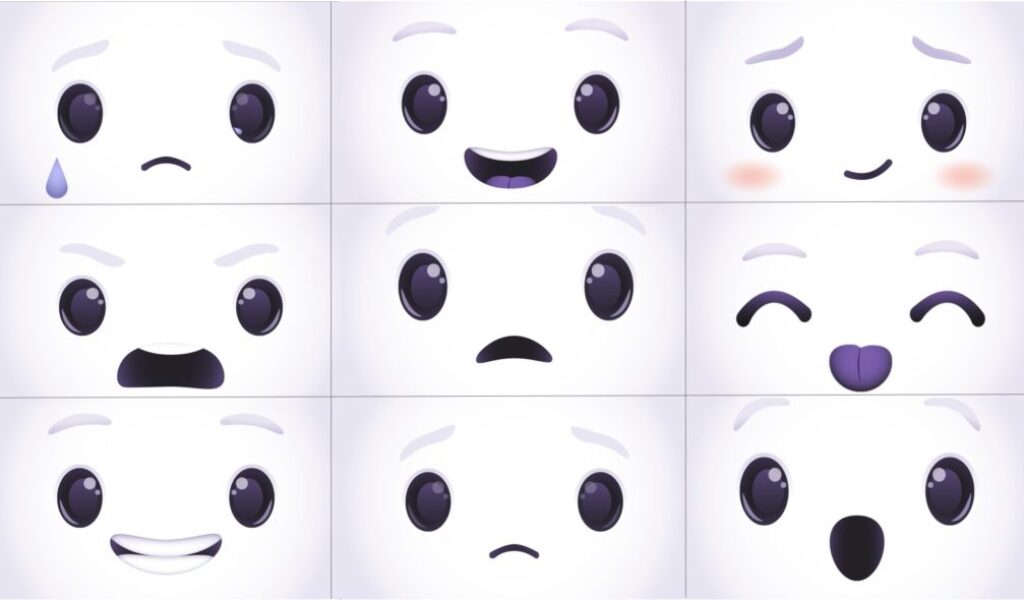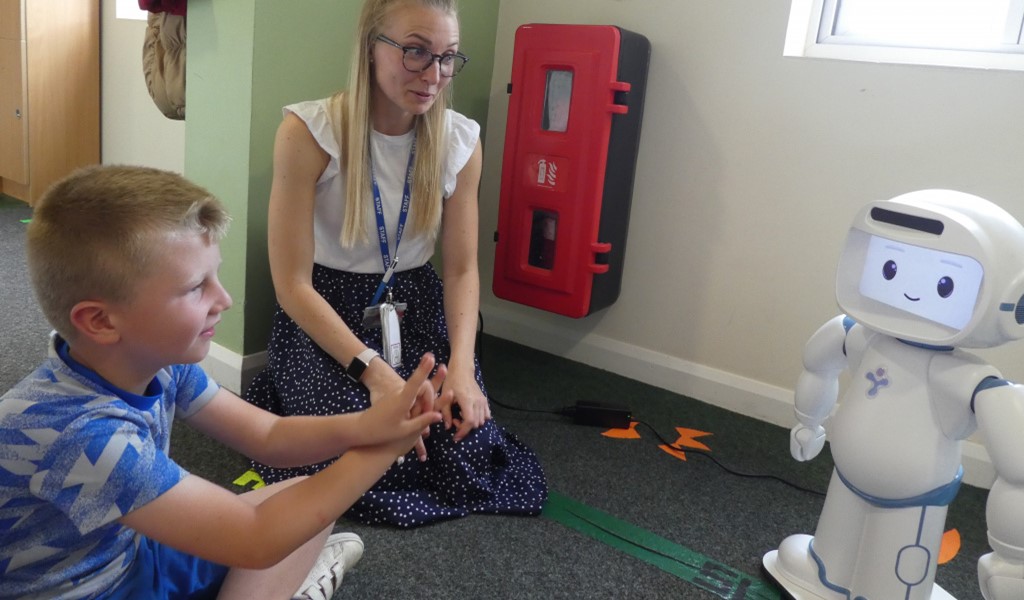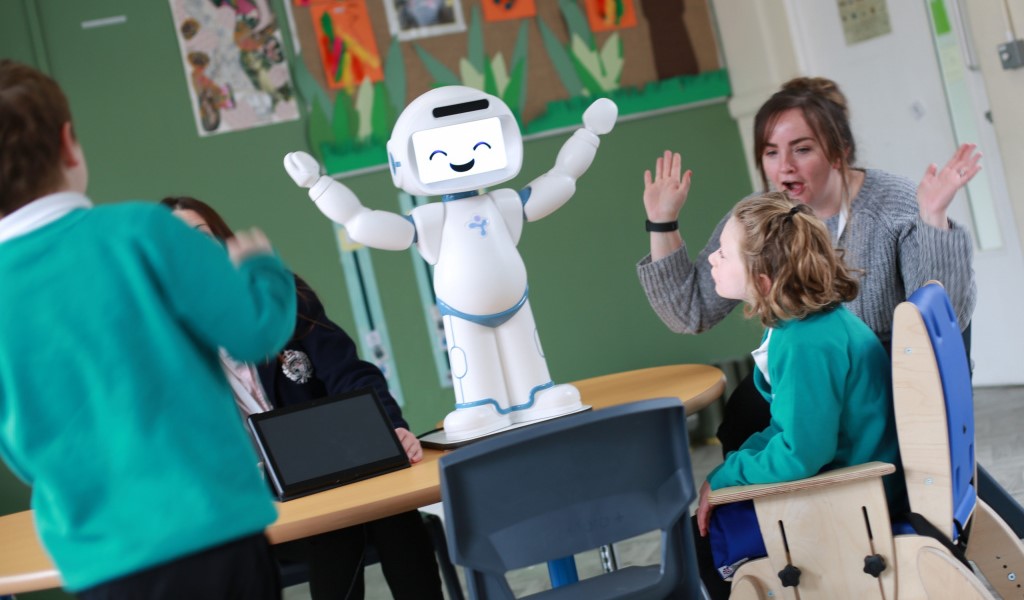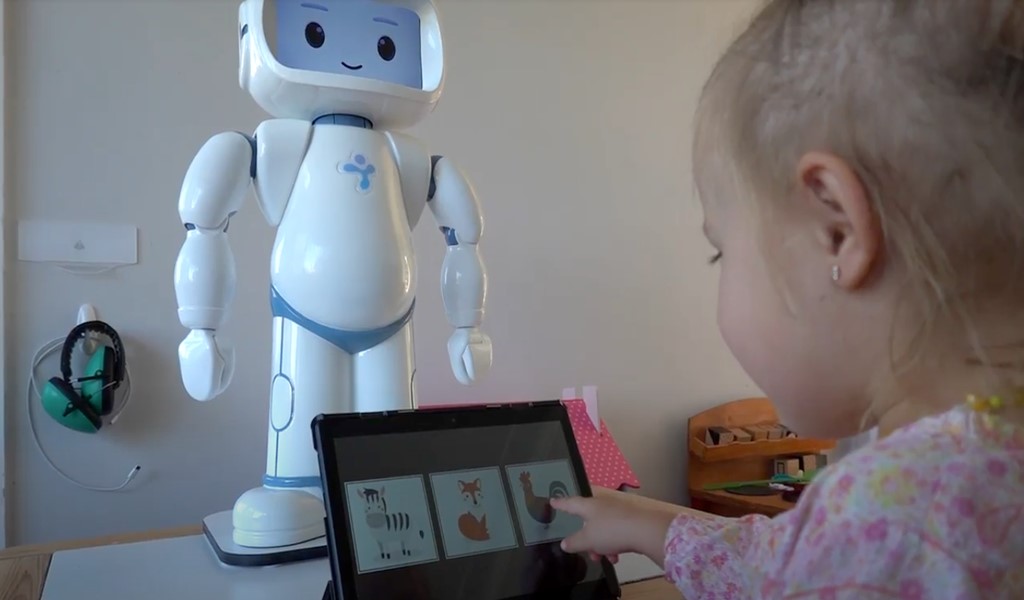Communicating about our feelings and understanding other people’s emotions can be challenging for many of us, but the challenge is even more when it comes to children with autism spectrum disorder (ASD). Social interaction with people can be extremely overwhelming for kids with autism, because they experience difficulties in recognizing facial expressions, body language and tonality of the voice.
Children with ASD can learn to be emotionally more interactive and responsive and their abilities in the area of emotional development can be improved. To help children with autism learn how to recognize emotions in others, it is helpful to practice in a context less overwhelming than a real-life social situation. Practising social skills such as identifying facial expressions in a context with less pressure allows children to build the knowledge and confidence to put these skills to use in daily life.
Emotion expressions in humans:
Humans have six basic emotions: happiness, sadness, disgust, surprise, anger and fear. There are also more complex emotions such as: Contempt, Guilt, Joy, Trust, Shame, Envy, Jealousy, Trust, Interest, embarrassment and some more.
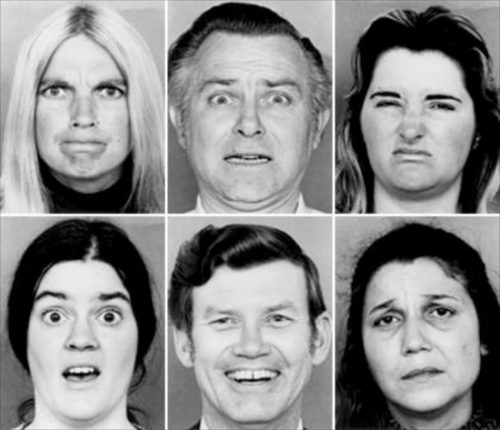
Paul Ekman’s six emotions: happiness, sadness, anger, surprise, fear, and disgust
Methods to teach emotion to children with autism:
There are various methods and tools to improve the knowledge of autistic children about facial expressions. A simple and very helpful way to practice about emotions is by playing card games about facial expressions. For instance, we can ask children to match facial expressions with the name or description of emotions. Such games also provide a good opportunity to discuss the reason behind different emotion expressions.
Some tips on teaching emotions using emotion cards:
- In the beginning, it is better to use images which have a simple and plain background, showing only the upper body and face of a person, and clearly showing a single emotion, in an exaggerated manner, so the children can start to learn how to recognize basic facial expression.
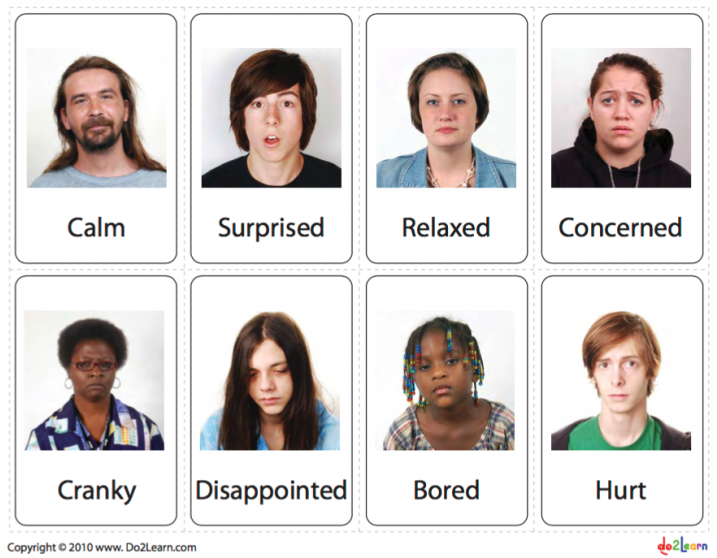
- While you are playing with the child, you can explain the meaning of each expression and what can be a possible reason for that expression. You can also discuss what makes each facial expression different from the others and give them clues about how to differentiate the emotions.
- When the child learned to recognize the basic facial expressions in photos with a plain background, we can start with more complex images such as pictures of people in real life situations and normal daily activities. For instance, playing with the image of a happy child at a party can improve the child’s ability to recognize the happy emotion. It also provides a good occasion to explain the social situation which has caused the happy emotion and discuss about possible responses.
You can find more resources for card games here.
QTrobot helps children with autism learn emotions
QTrobot uses the same methodology as described above. Trainings with QTrobot involves multiple steps, each focused on a particular stimulation.
- QTrobot illustrates emotions using its face. The QTrobot’s facial expressions are simplified and exaggerated to make it easier for the children to understand the expressions. QT teaches the emotions by naming the emotions, illustrating them and describing their main characteristics. The training is then followed by QTrobot showing emotions and asking the child to name the emotion and describe it.
- QTrobot is equipped with an advanced camera using which it can recognize objects and pictures. By recognizing emotion cards, QTrobot can make the card game very joyful. For instance, QTrobot asks the child to find a specific emotion among the cards and show the card to the robot. QTrobot recognizes the cards and provides proper feedback to the child, whether it is a correct card or not. The difficulty of the games in terms of complexity of emotions presented on each card and the number of cards presented in each session is fully customizable based on the abilities and needs of each individual child. QTrobot provides a set of emotion cards, but new cards can be also easily introduced to QTrobot and integrated into the archive of QTrobot card games for emotion recognition.
